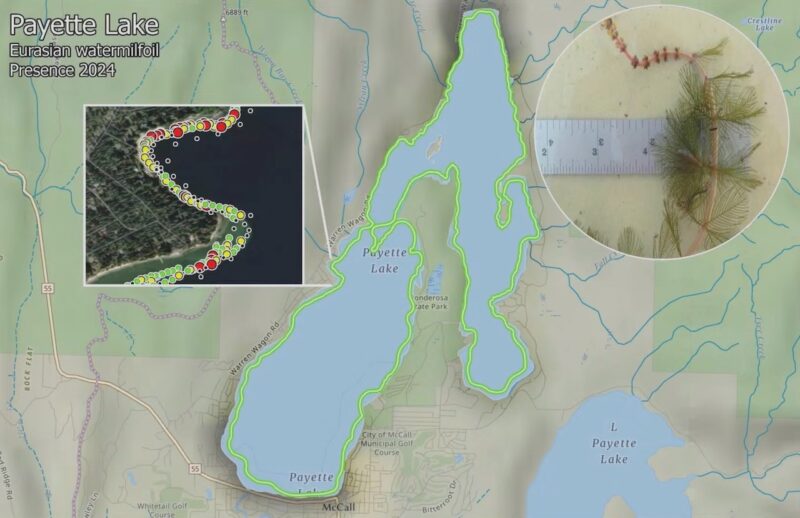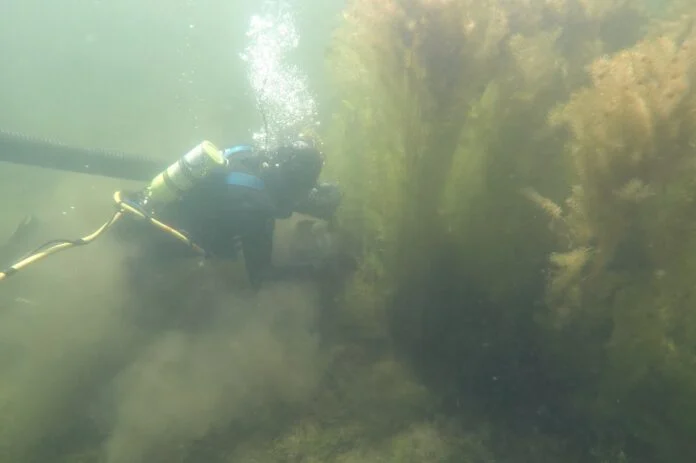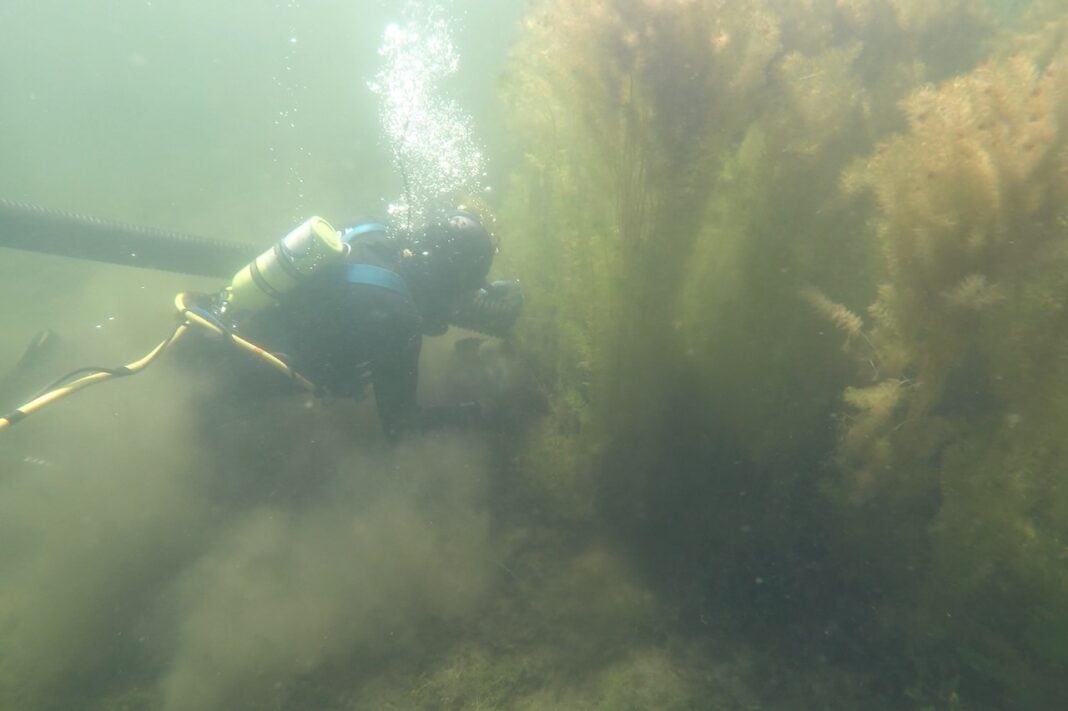A combination of herbicides, diver-led removal, and other tools will likely be needed to regain control of an invasive weed infestation in Payette Lake.
That was the consensus from a meeting on Tuesday between the Payette Lake Watershed Advisory Group and the Idaho State Department of Agriculture, which is responsible for managing Eurasian watermilfoil across the state.
Tuesday’s meeting was attended by ISDA Director Chenal Tewalt, who took questions from WAG board members to better understand public opposition that led the agency to cancel its plan to use herbicides on Payette Lake for the first time this summer in an eight-acre test plot.
“I’m not here to tell you they’re safe,” Tewalt said. “If there’s not an appetite for it here, I’m not the one to tell you that there isn’t merit to that.”
The WAG did not take an official position this summer on the state’s herbicide plan amid what multiple board members said was a lack of information to make an informed decision.
“A lot of the frustration from the community has been we couldn’t get answers,” said Tom Tidwell, a WAG board member who formerly served as U.S. Forest Chief. “We couldn’t get answers as to which chemical we’re going to use—because there is a difference. We couldn’t get an answer when they were going to do the eight acres. We couldn’t get an answer on why the state quit doing treatments.”
Tidwell suggested that many of those questions could be publicly answered in a five-year plan that outlines where various types of treatments, including herbicides, would and would not be used in Payette Lake. Several board members agreed with Tidwell’s suggestion.
Tewalt committed to developing that plan this winter in tandem with the WAG, the City of McCall, and Valley County. No immediate timelines were agreed upon Tuesday, but the agencies expect to reconvene this fall to work on the plan.
‘Integrated’ approach to milfoil control
Few specifics were discussed on Tuesday, but WAG members suggested herbicide use could be limited to areas away from drinking water systems to reduce contamination risk.
Meanwhile, diver-led mechanical removal, which has historically been used to remove milfoil from Payette Lake, would focus on sensitive areas near water intakes and docks.
Valley County Noxious Weeds Manager Steve Anderson also suggested that rubber mats could be moved on the lakebed around marinas and docks to keep milfoil from growing. The county budgeted $35,000 for milfoil removal this year and Anderson is requesting $50,000 for 2026.
“It’s going to take an integrated pest management approach,” he said. “The county is committed to continue with hand-pulling, but we can’t control it with what little budget we have. Some areas we’re going to have to use chemicals.”
Boat cleaning stations a possibility
The group also discussed milfoil prevention strategies, including establishing boat cleaning stations in Valley County to prevent further spread of invasive species into or out of local lakes and rivers.
The state currently operates about two dozen boat cleaning stations, but ISDA cannot afford to establish one in Valley County without closing another one. However, Tewalt said one could still be opened locally if it were staffed and managed by the county.
“If the community here wanted an inspection station, we would buy you the equipment to do it,” she said.
Milfoil grows in shallow waters around the lake that receive sunlight, or areas up to about 30 feet deep. Each time the plant is broken—by a swimmer, boater, or even wave action—the fragment drifts off and settles elsewhere on the lakebed to sprout a new plant.
Without donors like you, this story would not exist.
Make a donation of any size here
The plant can grow three to five feet in length each summer. If left unchecked, it could degrade water quality while also choking out boat propellers, fish habitat, and native plants.
Milfoil was first found in Payette Lake in the late 1990s. An annual diver removal program led by Valley County began in 2001 and continued through 2022 until ISDA took control of the program.

State: divers cost twice as much as herbicide
The state funded removal efforts by divers in 2022 and 2023, but now believes the infestation is too severe to continue without also using chemicals, which the agency says are more cost-effective than using divers alone.
“It costs us roughly twice as much as it does for herbicide,” Tewalt said. “So there is a certain point at which a (milfoil) population no longer makes sense for us to continue.”
ISDA mum on 2025 survey results
Surveys completed by ISDA indicate the infestation in Payette Lake grew from 77 acres in 2022 to 183 acres last year. Another survey was completed in July, but Tewalt declined to discuss those results at Tuesday’s meeting.
“This was more to talk about policy,” she said.
Valley Looked requested the 2025 survey results under the Idaho Public Records Act on Tuesday, but they had not received them as of publication.
‘Significant backlash’ led state to reverse plan
The state’s decision to cancel the herbicide test plot planned near North Beach this summer unraveled a plan ISDA began developing a year ago. It followed what Tewalt described as “significant backlash” from McCall residents, including complaint letters to Gov. Brad Little and other state agencies.
“The decision to change plans rested with me alone,” she said, emphasizing her frustration that complaints were not directed to her first. “To go to other agencies and to never call me is a problem.”
Tewalt pushed back on the WAG’s suggestion that a lack of information drove public opposition, citing complaint letters that referenced specific parts of ISDA’s plan.
“Some people maybe didn’t know what we were doing, but lots of folks did, and they were very specific about their complaints,” she said.






